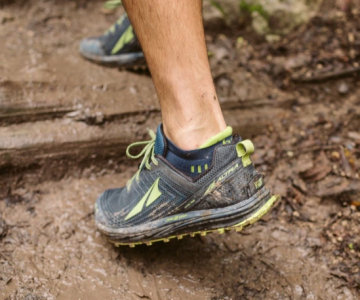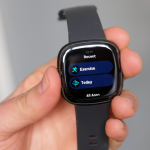Embarking on your running journey can be both exciting and challenging. Whether you’re aiming to build a healthy habit, get fit, or train for a race, this guide is designed to help you take the first step and gradually progress. Running may seem simple, but for beginners, it requires a methodical approach to avoid injuries and build long-lasting endurance. Here’s how you can start running today, no matter your fitness level.
Step 1: Get Motivated and Build a Habit
The first step to becoming a runner is motivation. The key to staying consistent is turning exercise into a habit. Once you make it a part of your routine, it won’t feel as difficult or require as much willpower. As Charles Duhigg, author of The Power of Habit, explains, a habit consists of a cue, routine, and reward. To build your running habit:
- Set a plan: Define your cues, such as a specific time or place to run, and pair them with a reward (like a post-run treat).
- Be consistent: Choose a regular time to run each day and stick to it. The more consistent you are, the more natural it will become.
- Reward yourself: After each run, reward yourself with something you enjoy. This creates a positive association with your runs.
- Create a support system: Running with a friend or joining a local running group can keep you accountable and motivated.
Step 2: Start Moving with Walking
Before jumping straight into running, it’s essential to get your body used to regular movement. Walking is the best place to start if you’re new to exercise. Aim for brisk walks—not leisurely ones—to prepare your body for the physical demands of running. Walking helps strengthen your muscles and joints, reducing the risk of injury when you eventually start running.
Here’s a simple walking plan to get you ready for running:
- First workout: 15-minute walk
- Goal workout: 60-minute walk
Note: If you’re new to exercise or have specific health concerns, consider extending this walking phase to 8-12 weeks to allow your body to adjust.
Step 3: Transition from Walking to Running
Now that you’re comfortable with regular walking, it’s time to add running into the mix. Start with a run/walk approach to gradually build your endurance. The goal here is to run for short intervals, followed by walking, and slowly increase the running duration.
Begin with a seven-week run-walk plan:
- Week 1: 30 minutes of walking
- Goal: 60 minutes with a 2:1 running to walking ratio by the end of the seven weeks.
If you feel ready to challenge yourself more, you can gradually adjust your run/walk intervals. But remember, it’s okay to repeat a week if you feel you need more time.
Step 4: Running Non-Stop
Once you’ve built up your stamina with run/walk intervals, you can work toward running continuously without stopping. The aim is to run at a conversational pace, so you should still be able to talk without gasping for air.
A simple 7-week beginner plan to help you run your first 5K:
- Week 1: 30 minutes, with 20 minutes at a run/walk ratio of 3:2
- Goal: Run 3.1 miles (5K) without stopping.
Before beginning this plan, ensure that you’ve spent at least 6 weeks run-walking, with around 30 minutes of exercise, five days a week. Adjust your pace and duration if needed, but aim to finish the 5K run within 14 weeks.
Step 5: Build Endurance for Longer Runs
Once you’ve mastered a non-stop 5K, it’s time to set your sights on longer distances. Increasing your endurance will allow you to run a 10K and prepare you for future races. This plan incorporates hills and some speedwork to build strength.
A 7-week plan to take you from a 5K to a 10K:
- Week 1: 2-mile run
- Goal: Run 6-7 miles continuously by the end of the plan.
If you’ve been running consistently for at least 30 minutes per session and can comfortably complete a 5K, you’re ready for this challenge. If it feels too fast, don’t hesitate to repeat any week until you’re ready to move on.
Step 6: Improve Your Speed
If you’ve been running for a while and are comfortable with 5-6 mile runs, it’s time to focus on speed. This plan will help you run faster, improve endurance, and build leg strength.
An 8-week plan to boost your running speed:
- Week 1: 2-mile easy run
- Goal: 8-mile run with 4×800 meters at your 5K pace.
This plan is for “advanced beginners,” so you should already be running around 18 miles per week, including a 5-mile long run. If you’re short on time, you can reduce the number of runs per week, but aim to keep up the intensity during your key workouts.
Tips for Success:
- Get a check-up: If you’re over 40 or have health concerns, consult with your doctor before starting any new exercise routine.
- Invest in good gear: A quality pair of running shoes and sweat-wicking socks are essential for preventing injuries.
- Sneak in activity: Take walking breaks throughout the day to stay active and keep your body ready for your running sessions.
- Set realistic goals: It’s important to stay consistent with your running while keeping a pace that feels comfortable. Speed will come with time.
- Stay flexible: If needed, split your runs into shorter sessions. Three 10-minute runs can offer the same benefits as one 30-minute run.
- Track your progress: Use a running log or an app to track your miles and monitor your improvements.
- Be patient: Results won’t come overnight, so trust the process. As your body adapts to running, you’ll notice physical and mental improvements.
Conclusion
Starting to run is a rewarding journey that will enhance your fitness and overall well-being. Whether you’re aiming to complete your first 5K or run a faster 10K, building a strong foundation and progressing gradually is key to achieving your goals. Keep a steady pace, stay consistent, and most importantly, enjoy the process of becoming a runner.





